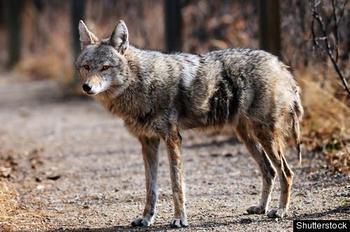|
By Julia Zeh
Edited by Hsin-Pei Toh Don’t tell Road Runner, but… coyotes in New York City? That was how most people reacted last week when reports said that a coyote had been spotted in Riverside Park. A wild coyote chase across Manhattan soon began as authorities spent days searching for this wily canine. Most know about coyotes from the Looney Tunescartoons, in which Road Runner successfully evades falling anvils that Wile E. Coyote uses to catch him. Coyotes are relatively small, omnivorous canines closely related to wolves. Coyotes were originally found in the Western plains of the United States, but they have spread out over time to inhabit most of North America. In fact, since the arrival of settlers, coyote populations have thrived and expanded. Even more recently, an increasing number of coyotes have been found to inhabit urban areas, particularly in cities such as Chicago, Washington D.C., and even New York City. What’s interesting about this urban population explosion, however, is that coyotes are not particularly fond of humans. Even more interesting is the fact that these coyotes actually live longer than those living in rural areas. Part of the reason for this is that coyotes in Northeastern US are far bigger and stronger than their counterparts anywhere else, because the former interbreeds with wolf populations. Furthermore, as the wolf population decreased due to human influence, the coyote population was in turn able to rise up and fill the niche, or ecological role, of wolves as medium-sized predators. They also reproduce faster than the latter, allowing them to thrive while wolves struggled. This allowed coyotes more habitat space, more prey, and an increase in other resources. Coyotes also represent the power of rapid evolution and adaptive change. These animals have been experts at responding to environmental changes over the past few centuries, particularly those caused by human settlement and later urbanization. It is for this reason that they have entered urban areas: to quickly adapt to these new environmental conditions, which are not particularly conducive to medium and large sized mammals. Without competition from the latter, there is much for the coyote to take advantage of in this new niche. But this urban coyote development is nothing to fear. Although you’re probably not used to hearing about anything larger than a raccoon or someone’s pet dog wandering city streets, the coyotes don’t actually pose a threat to humans. On the contrary, they actually do some good to a few urban environments. For example, they control populations of deer and Canada goose, two organisms which have caused problems nationally, especially just outside of the cities into which coyotes have entered, with their recently rising populations due to loss of top predators. As top predators around the globe become increasingly threatened and endangered, coyotes are an important lesson in ecosystem dynamics and an example of what happens when a top predator population is decreased or eliminated. This helps scientists to model what happens when a smaller predator rises up to try and fill a vacant niche, which then impacts the characteristics of the smaller predatory population as well as the other populations in the ecosystem with which the species shares resources. Ecosystems are incredibly complex and fragile webs in which everything is connected and dependent on each other for survival. When just one species, no matter how big or small, is impacted—and in extreme cases, driven to extinction—the whole ecosystem feels the effects. This is true for all populations, including humans, which interact with coyotes, in ecosystems everywhere. What happens to one species is something of importance to all other species, and thus is an important consideration for humans who are, after all, still members of this complicated and vital interconnectedness of life on Earth.
0 Comments
Leave a Reply. |
Categories
All
Archives
April 2024
|

